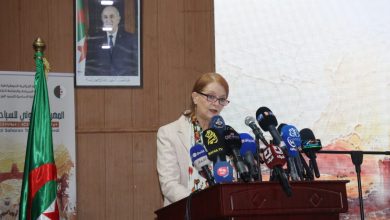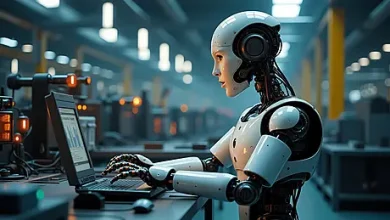Imagine being able to charge your laptop or phone in just one minute, or fully charge an electric car in 10 minutes. While this is not yet possible, a new study conducted by a team of scientists from the University of California, Boulder, and published in the journal Proceedings of the National Academy of Sciences, could pave the way for such advancements.
The researchers, led by Assistant Professor of Chemical Engineering Ankur Gupta, discovered how tiny charged particles known as “ions” move within a complex network of small pores. This breakthrough could lead to the development of more efficient supercapacitors for energy storage.
Supercapacitors, which are energy storage devices that rely on the accumulation of ions in their pores, offer faster charging times and longer lifespans compared to batteries. However, they have not yet reached the one-minute charging rate that researchers hope their discovery will help achieve.
What Does This Breakthrough Mean?
To illustrate this significant breakthrough, consider energy storage as a large store receiving shoppers (ions) to pick up their purchases (charge) and exit quickly.
While conventional stores (batteries) can handle only a limited number of shoppers at a time, leading to slow checkout lines (slow charging times), supercapacitors resemble a more advanced store designed to speed up this process.
However, even these advanced stores face challenges, as the layout of the aisles (pores) can cause traffic jams (inefficient ion movement), slowing down the process.
The researchers, led by Gupta, discovered how shoppers navigate a complex maze of interconnected aisles and found that the way they move at intersections (pore junctions) was not fully understood before. Previous studies only looked at shoppers (ions) moving in straight lines through single aisles.
Instead of moving randomly, this new discovery will enable shoppers to follow a new and improved route plan that reduces traffic jams and speeds up their movement through the store. This new understanding modifies the traditional rules of “Kirchhoff’s Law,” which has been used for over a century to describe how current flows in circuits, because ions (shoppers) do not move in the same way as described by Kirchhoff’s Law.
Modifying Kirchhoff’s Law
Kirchhoff’s Law describes the flow of current in electrical circuits since it was formulated by German physicist Gustav Kirchhoff in 1845. It is a fundamental element in science lessons for high school students.
To understand it, think of a busy intersection where multiple roads meet. The law is akin to saying that the number of cars entering the intersection must equal the number of cars leaving it, meaning the sum of the voltage differences across all components in any path equals zero.
While the law works with cars (ions) moving on straight roads, it does not perfectly apply to bicycles moving through a crowded market with many intersections. Researchers had to update the traffic rules to account for the different movements of bicycles in such a complex environment.
Gupta stated in a University of California press release, “Before the study, ion movements were only described in the literature in a single straight pore. Through this study, we can simulate and predict ion movement in a complex network of thousands of interconnected pores in just a few minutes. This is the leap in work—we found the missing link that will help us develop more efficient supercapacitors.”
He added, “The fundamental appeal of supercapacitors lies in their speed, and our research results will enable us to make their charging and energy release faster through more efficient ion movement.”
This breakthrough is significant not only for energy storage in vehicles and electronic devices but also for power grids, where fluctuating energy demand requires efficient storage to avoid waste during low demand periods and ensure rapid supply during high demand, Gupta explained.
Multiple Advantages and Unresolved Questions
Khaled Radwan, a chemical engineering researcher at South Valley University in Egypt, explained to Al Jazeera that the improved understanding of ion movement in porous materials could lead to the development of supercapacitors that charge much faster than current batteries, potentially revolutionizing the charging of electronic devices and electric vehicles.
More efficient ion movement means less energy waste during charging and discharging processes, enhancing the overall efficiency of energy storage devices, making them more environmentally friendly and cost-effective, Radwan noted.
Additionally, while supercapacitors generally have a longer lifespan compared to batteries because they rely on physical ion movement rather than chemical reactions, improving ion movement efficiency could further extend their operational life.
Although the immediate application of the new understanding could benefit the charging of electronic devices and electric cars, Radwan pointed out that enhanced supercapacitors could help stabilize power grids by efficiently storing and releasing energy as needed, managing fluctuations in energy supply and demand, and reducing waste. This could also be beneficial in renewable energy storage, such as solar and wind power, where rapid energy storage and discharge are critical.
However, Radwan also highlighted unresolved questions that researchers need to address to turn the new understanding into an applicable product. These include “What challenges might arise in manufacturing supercapacitors on an industrial scale?” and “What will be the cost-effectiveness of these new supercapacitors compared to current technologies, and will the benefits outweigh potential increases in production costs?”
Finally, Radwan asked, “How durable and reliable are the materials used in these new supercapacitors over long periods compared to current materials used in batteries and capacitors?”
For more details, visit our website dzwatch.dz.
Charge Your Laptop in One Minute




